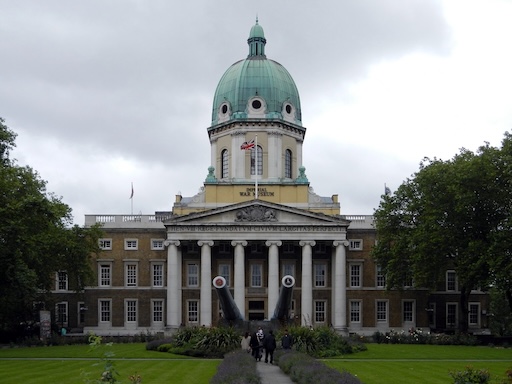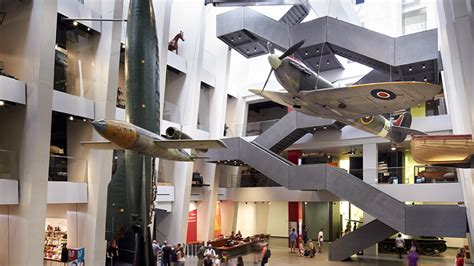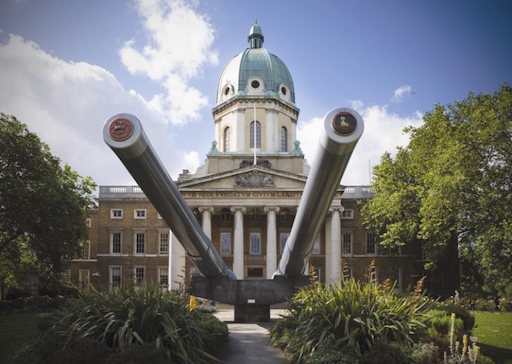
When you hear “war museum,” your mind probably jumps to tanks, guns, and military maps—and yes, the Imperial War Museum (IWM) in London has all of that. But spend just a little time inside its massive stone walls, and you'll discover something deeper. This isn't just a gallery of old weapons. It's a living archive of human struggle, resilience, and the strange ripple effects of global conflict.
Located in the historic Lambeth district, the Imperial War Museum is a place where silence speaks louder than explosions. Where personal letters, half-burned photographs, and children’s toys salvaged from rubble tell stories more powerful than any battlefield map. If you're expecting glorified warfare, think again—this museum leans into the emotion, the nuance, and the aftermath.
War, Up Close and Personal
Originally opened in 1917 during the First World War, the IWM was created to preserve and present the experiences of ordinary people caught in extraordinary circumstances. Today, its five floors cover everything from World War I trenches to the Cold War, from Nazi propaganda to modern-day terrorism. And through it all, the focus remains sharply human.
Sure, you'll see Spitfires suspended from the ceiling and tanks parked in the atrium. But you'll also read love letters written from the front lines, diary entries from Londoners during the Blitz, and interviews with Holocaust survivors who witnessed history’s darkest chapters firsthand. It’s part museum, part memory vault.

The Holocaust Exhibition: Unflinching and Unforgettable
One of the most impactful areas of the museum is its permanent Holocaust Exhibition. Not recommended for young children, this sobering section takes you chronologically through the rise of anti-Semitism, the brutality of the camps, and the devastating aftermath. What sets it apart is the deeply personal narrative—it's not about numbers, it's about names, faces, stories.
In one room, there’s a pair of tiny shoes from a child who never came home. In another, filmed testimonies of survivors play quietly on loop. The space demands reflection. And it delivers something many museums forget: empathy.
From the Trenches to the Kitchen Table
What makes the IWM truly special is how it shows war from every angle. There's an entire floor dedicated to the home front—what it was like to live through rations, blackouts, and bomb shelters. You'll find ration books, propaganda posters, gas masks made for babies, and even war-time recipe books (spoiler: they include a lot of potatoes).
There are exhibits that explore the role of women in war, the art and poetry created during times of crisis, and even how toys and cartoons shaped public opinion. The museum doesn’t just ask, “What happened?”—it asks, “How did it feel?” and “What did it change?”

Curiosity in the Chaos
Not everything here is heavy. Some exhibits are oddly charming in their weirdness. There’s a prosthetic leg made from salvaged metal, a carrier pigeon capsule used in secret missions, and war-time fashion made from blackout curtain fabric. There's even an Enigma machine for the code-breaker in all of us.
These little glimpses show how people innovate, adapt, and even laugh in the face of disaster. They remind us that humanity persists—not just in survival, but in expression.
More Than One Museum
Though this article focuses on the London branch, it’s worth noting that the IWM is a network of five sites, including HMS Belfast on the Thames, the Churchill War Rooms, and IWM North in Manchester. Each one offers a unique perspective on the human experience of conflict.
But London’s IWM is the beating heart of the collection. Housed in what was once the Bethlem Royal Hospital (yes, the infamous “Bedlam”), it stands today as a monument not to madness—but to memory, reflection, and hard-learned lessons.
Why You Should Go
Because war, as abstract and overwhelming as it may seem, is ultimately about people. It’s about families split by borders, lovers torn by politics, artists painting through trauma, and children growing up too fast. The Imperial War Museum doesn’t glorify it—it humanizes it.
So if you ever find yourself in London and need a break from the glitz and grandeur, step into the quiet gravity of the IWM. Stand beneath a fighter plane. Read a soldier’s final letter. Listen to a voice from history whisper through the walls. You won’t just learn about war—you’ll feel its weight, and maybe, its warning.
Share this story and inspire others.
Tags: Imperial War Museum London, war history museum UK, World War exhibits, London hidden wonders, Chasing Hidden Wonder
 St. Nectan’s Glen – A Hidden Waterfall Steeped in Celtic Legend
St. Nectan’s Glen – A Hidden Waterfall Steeped in Celtic Legend
 Puzzlewood – A Real-Life Fantasy Forest in Gloucestershire
Puzzlewood – A Real-Life Fantasy Forest in Gloucestershire
 Fingal’s Cave – Scotland’s Singing Sea Cathedral of Stone
Fingal’s Cave – Scotland’s Singing Sea Cathedral of Stone
 Tower of London – The Fortress That Guards History
Tower of London – The Fortress That Guards History
 The British Museum – Where the World’s Treasures Come to Stay
The British Museum – Where the World’s Treasures Come to Stay
 Alnwick Castle – Where Magic Meets Medieval Might
Alnwick Castle – Where Magic Meets Medieval Might
 Chartwell House – Where Churchill’s Spirit Still Walks the Halls
Chartwell House – Where Churchill’s Spirit Still Walks the Halls